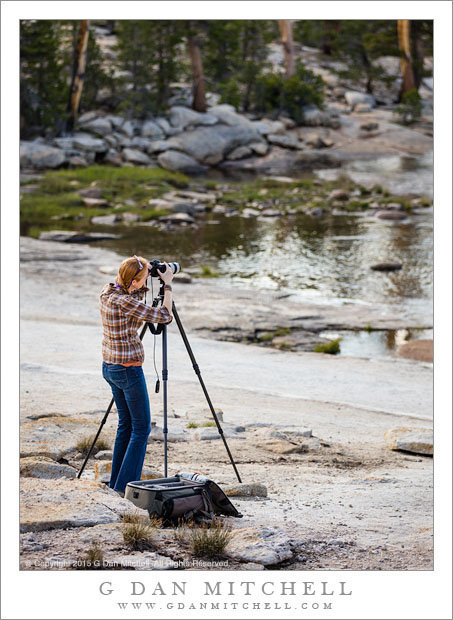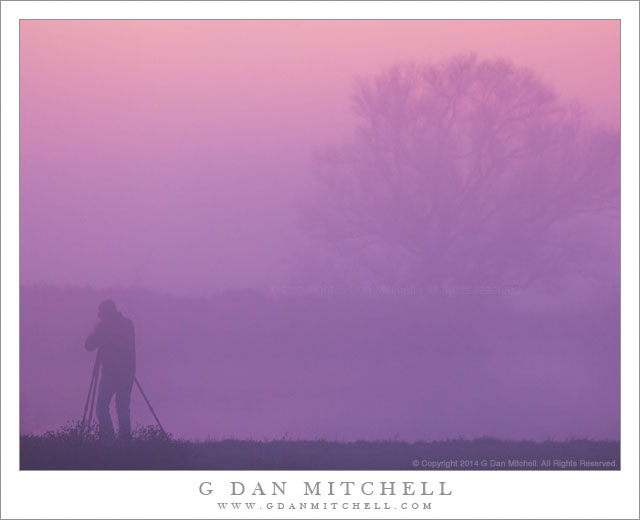
Photographer Charlotte Hamilton Gibb. Yosemite National Park, California. July 12, 2015. © Copyright 2015 G Dan Mitchell – all rights reserved.
Landscape photographer Charlotte Hamilton Gibb works the summer evening light along the Tuolumne River, Yosemite National Park
This photograph was one result of a wonderful set of coincidences in the Yosemite high country. I had gone up to the Tuolumne Meadows area for a few days of photographing mid-July. I arrived midday, managed to get a campsite, set everything up, hung out a bit… and it was time to figure out what to photograph in the late afternoon and evening. As sometimes happens, especially on the first day of such a trip, when I’m still working my way back into “the zone,” I didn’t have a plan. So I decided to simply get in my vehicle and head back to the west along Tioga Pass Road and look for some interesting potentials in the light and the scenery. At one point I caught a glimpse of some interesting light on trees and I quickly pulled over into a clearing at the side of the road. I noticed two other cars already there and a woman getting out of one of them, and I thought “I hope I’m not annoying her.” Then I realized that she was a friend and her husband was parked one car up. Claudia and Michael and I exchanged greetings and quickly decided to join forces and head out across the meadow.
As we crossed to the other side I saw another couple, one with a serious looking tripod, who seemed to be following us. we paused at the far side of the meadow and they caught up — it was Charlotte and her husband. Now the party was becoming larger! We headed slowly downstream, talking and watching for subjects, finally arriving at a spot where the river twisted through a few turns and granite slabs lined the banks. Each of us went to work on our particular views of the spot, and I made this photograph of Charlotte, focused so intently on her photograph that she was unaware that I was photographing her.
 G Dan Mitchell is a California photographer and visual opportunist. His book, “California’s Fall Color: A Photographer’s Guide to Autumn in the Sierra” is available from Heyday Books and Amazon.
G Dan Mitchell is a California photographer and visual opportunist. His book, “California’s Fall Color: A Photographer’s Guide to Autumn in the Sierra” is available from Heyday Books and Amazon.
Blog | About | Flickr | Twitter | Facebook | Google+ | 500px.com | LinkedIn | Email
All media © Copyright G Dan Mitchell and others as indicated. Any use requires advance permission from G Dan Mitchell.



